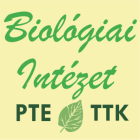hidrobi_2
Credit: CsZ

Research
Our research in a nutshell...
The main topics of our research are always about aquatic macroinvertebrates as one of the most diverse and various assemblages of aquatic biota. However, we also deal with other groups of organisms, the exploration of the environmental characteristics of wetlands and aquatic habitats, as complex changes taking place in these endangered habitats can only be understood by examining them together. We aim to combine classical testing strategies with the latest and most efficient methods, including integrative taxonomy, DNA barcoding, and metabarcoding techniques.
Our current research activity can be divided into four groups:
≫ Our main focus at present is to understand the impact of increasing drying of small watercourses due to global warming on aquatic communities, including their organization, meta-community processes, their ecosystem processes and the ecosystem services they define. Our research is currently underway in the framework of one H2020 and two OTKA projects.
≫ The other main direction, partly related to the drying topic, but using a different approach and methodology, can be characterized by laboratory experiments. Under fully controlled conditions, we perform a series of experiments in our artificial stream laboratory, the results of which bring us closer to understand the life history, habitat preference, responses to environmental changes of given species with nature conservation importance, being protected or alien species, or to see the impact of certain species on each other or on the organization of communities, or just to demonstrate a synergistic connection between pollution and drying.
≫ The third group of our research are the self-covered smaller projects that have been running for a long time, partly inherited from our researchers': faunistic or biodiversity surveys in Hungary and the Mediterranean, monitoring the life cycle of selected species, biodiversity surveillance studies and impact monitoring before / after habitat interventions. Most of these are projects of a smaller budget, number of samples and territorial scope, which are often implemented on an ad hoc basis, based on available resources and requests, but together form a very large, unique data set with several hundred thousand of records.
≫ The fourth group includes our connections to larger, European or even global research projects, where we join the research by providing our previous data or local sampling of a planned field / semi-field study / experiment, thus ensuring the widest possible use of our data. In this way, we have joined FunAqua, BiodiversIRES, GloBioTrends and other large-scale projects.

.jpg)